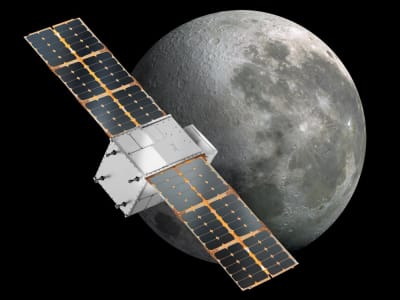Washington: The US space agency is planning to send a small satellite about the size of a briefcase — also known as a CubeSats which will use lasers for the first time to detect naturally occurring surface ice believed to be at the bottom of craters on the Moon that have never seen sunlight.
Called Lunar Flashlight, it will also be the first planetary spacecraft to use a “green” propellant, a new kind of fuel that is safer to transport and store than the commonly used spacecraft propellant hydrazine, NASA said Monday.
“A technology demonstration mission like Lunar Flashlight, which is lower cost and fills a specific gap in our knowledge, can help us better prepare for an extended NASA presence on the Moon as well as test key technologies that may be used in future missions,” said John Baker, Lunar Flashlight project manager at NASA’s Jet Propulsion Laboratory in Southern California.
Over the course of two months, Lunar Flashlight will swoop low over the Moon’s South Pole to shine its lasers into permanently shadowed regions and probe for surface ice.
Found near the North and South Poles, these dark craters are thought to be “cold traps” that accumulate molecules of different ices, including water ice.
The molecules may have come from comet and asteroid material impacting the lunar surface and from solar wind interactions with the lunar soil.
“The Sun moves around the crater horizon but never actually shines into the crater,” said said Barbara Cohen, principal investigator of the mission at NASA’s Goddard Space Flight Center in Greenbelt, Maryland.
“Because these craters are so cold, these molecules never receive enough energy to escape, so they become trapped and accumulate over billions of years.”
Lunar Flashlight’s four-laser reflectometer will use near-infrared wavelengths that are readily absorbed by water to identify any accumulations of ice on the surface.
Should the lasers hit bare rock as they shine into the South Pole’s permanently shadowed regions, their light will reflect back to the spacecraft, signaling a lack of ice.
But if the light is absorbed, it would mean these dark pockets do indeed contain ice. The greater the absorption, the more widespread ice may be at the surface, NASA said.
The mission is detailed in a new paper published in the IEEE Aerospace and Electronic Systems Magazine.
Lunar Flashlight will be one of 13 secondary payloads aboard the Artemis I mission, the first integrated flight test of NASA’s Deep Space Exploration Systems, including the Orion spacecraft and Space Launch System (SLS) rocket.
Under the Artemis program, astronauts and robots will explore more of the Moon than ever before.
Robotic missions begin with commercial lunar deliveries in 2021, humans return in 2024, and the agency will establish sustainable lunar exploration by the end of the decade.






































